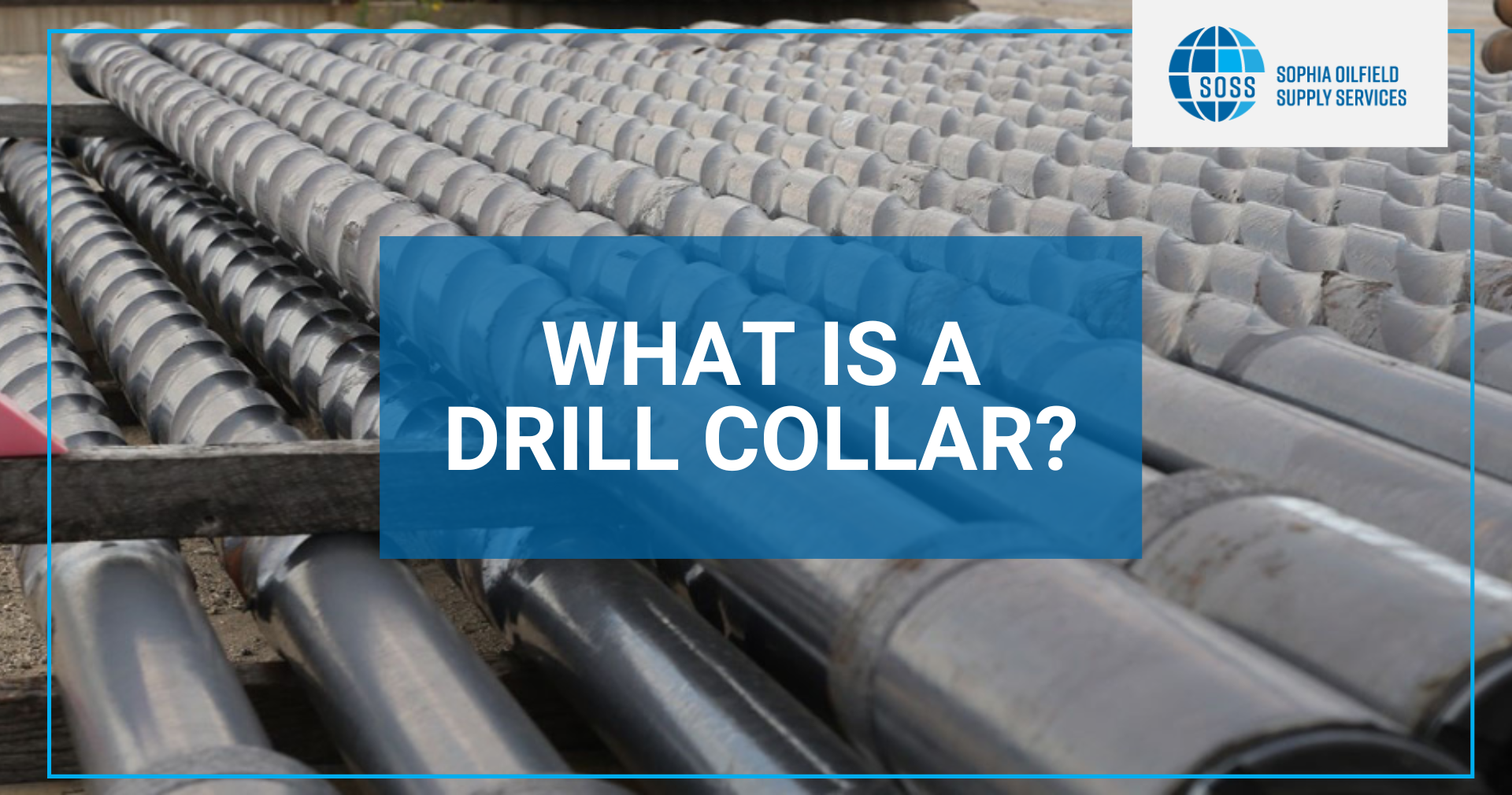A quiet drama is playing out under the surface, in the deep dark recesses of the Earth. A persistent drill bit chips away at the rock, creating a channel that leads to valuable resources, inch by inch. However, without the drill collar, the unsung hero of the drilling business, this struggle of brute force would not have been conceivable.
Envision a thick, massive, cylindrical steel pipe that weighs several tonnes and is usually between six and thirty feet long. That is similar to a drill collar. These sturdy parts make up the main structure of the drill string, which is the lengthy assembly that joins the drill bit and surface area.
Importance of Drill Collar
A drill collar plays a vital role in the drilling process.A drill collar is a crucial component in oil drilling operations, designed to provide weight and stability to the drill string. It is typically made of a welded pipe with high mechanical properties to withstand the extreme conditions of drilling. The collar is equipped with features such as slip and float shoe to facilitate the insertion of the drilling assembly into the wellbore and ensure efficient circulation of drilling fluid.
The detailed process is given below.
Adding weight: Their main purpose is to increase the drill bit’s downward thrust and penetration through hard rock formations by adding weight to it.
Rigidity: The rigidity of drill collars as compared to drill pipes helps in the maintenance of a straight borehole when one is drilling at an angle.
Vibration dampening: It prevents the vibrations from climbing the drill string and damaging the surface equipment by absorbing vibrations caused by the drill rotation.
Tool guidance: Some drill collars are designed to accept specific equipment that is used to guide the drill bit or gather information inside the wellbore.
Types of drill collars
Drill collars are available in different varieties each for a specific purpose. They are explained below. The simplest kind of drill collars are integral ones, which have threaded ends for connecting and a smooth exterior.
Spiral drill collars: In order to minimize friction and avoid sticking in soft formations, grooves are cut along the outside surface to limit contact with the wellbore.
Drill collars that are not magnetic: Constructed from unique alloys, these collars reduce magnetic interference, which is essential for directional drilling and logging operations.
Spiral drill collars feature a spiral groove design to enhance working principle and minimize sticking while drilling. Their size varies according to the drilling requirements, and they function by adding weight and preventing buckling.
The Rise of the Unsung Hero
Drill collars must withstand extreme heat, corrosive fluids, and continuous abrasion in order to function under extreme pressure. Nevertheless, they put in endless effort and discreetly support the accomplishment of each drilling operation. They are the unsung heroes who push the boundaries farther into the Earth, providing our planet with fuel and vital resources. They are the backbone of the drill string.
Beyond the Fundamentals:
Drill collars are about more than just steel and weight. The limits of efficiency and performance are continuously being pushed by ongoing research and development. Among the innovations are:
Advanced materials: To balance weight and performance, lighter yet just as robust materials like titanium alloys are being investigated.Drill collars with built-in sensors and communication systems allow for real-time parameter monitoring, improving control and facilitating data-driven decision-making.
Anti-wear coatings: To counteract abrasion, specialized coatings are being developed to prolong drill collar life and save maintenance expenses.Even though it’s not the most visually appealing or easily identifiable part of the drilling rig, the drill collar plays an essential purpose. One revolution at a time, it is the silent workhorse and unsung hero of the oil and gas industry, pushing the frontiers of exploration and extraction.
Although the drill collar has been dubbed the unsung hero of the drilling industry, there is a lot more to discover behind its robust exterior. Let’s examine these important components’ designs, types, materials, and even cutting-edge innovations as we go deeper into their technical details.
The Structure of a Drill Collar:
Body: The drill collar’s main cylinder, made of specially alloyed high-strength steel. The diameter and thickness of it change according on the required stiffness and weight.
Internal Bore: A central channel that passes through the collar and connects to the drill bit to facilitate the flow of drilling fluids.
Threaded Connections: The collar has male and female threads on both ends, which allow it to be securely attached to other drill collars and drilling instruments.
External Grooves (Optional): A few collars have machined helical grooves on the outside. These reduce friction and avoid sticking in soft forms by functioning as tiny roller bearings.
Material used to make drill collars
The performance and durability of drill collars are significantly influenced by the material selection. High-strength carbon steel has always been the standard because it provides a good balance between strength, weight, and price. Other choices, though, are becoming more popular:
Superior strength and resistance to corrosion characterize nickel-copper alloys, which are especially well-suited for deepwater and high-pressure settings.
Titanium alloys: These alloys can optimize the weight-to-strength ratio, increasing handling and lowering fuel consumption. They are lighter than steel yet just as strong.
Innovation in drill collars
Smart Drill Collars: These collars collect data in real-time on downhole parameters such as temperature, vibration, and pressure. They are outfitted with sensors and communication technologies. With the use of this data, operators are better able to plan ahead, maximize drilling performance, and identify possible issues before they become serious.
Advanced Coatings: To counteract deterioration, unique coatings are being created to prolong drill collar life and save maintenance expenses. To further increase longevity, these coatings can also provide protection against chemical and corrosion attack.
Additive Manufacturing: New designs and features for drill collars are becoming possible thanks to 3D printing technology. This might result in collars that are stronger, lighter, or even made to order for certain drilling tasks.
Conclusion
Drill collars are more than just bulky pipes these days. They are advanced instruments that are always changing to satisfy the needs of a fast-paced market. We can appreciate these unsung heroes—the essential foundation of any successful drilling operation—better by knowing their technical features, materials, and cutting-edge innovations.
Recall that this is only the beginning. Please ask questions if you’d like more information on any particular feature of drill collars! We would be pleased to go into further depth about drill collar weights, materials, design, elements, or current research.

